Military
Which Were the Most Mass-produced American Bomber Planes of WWII?
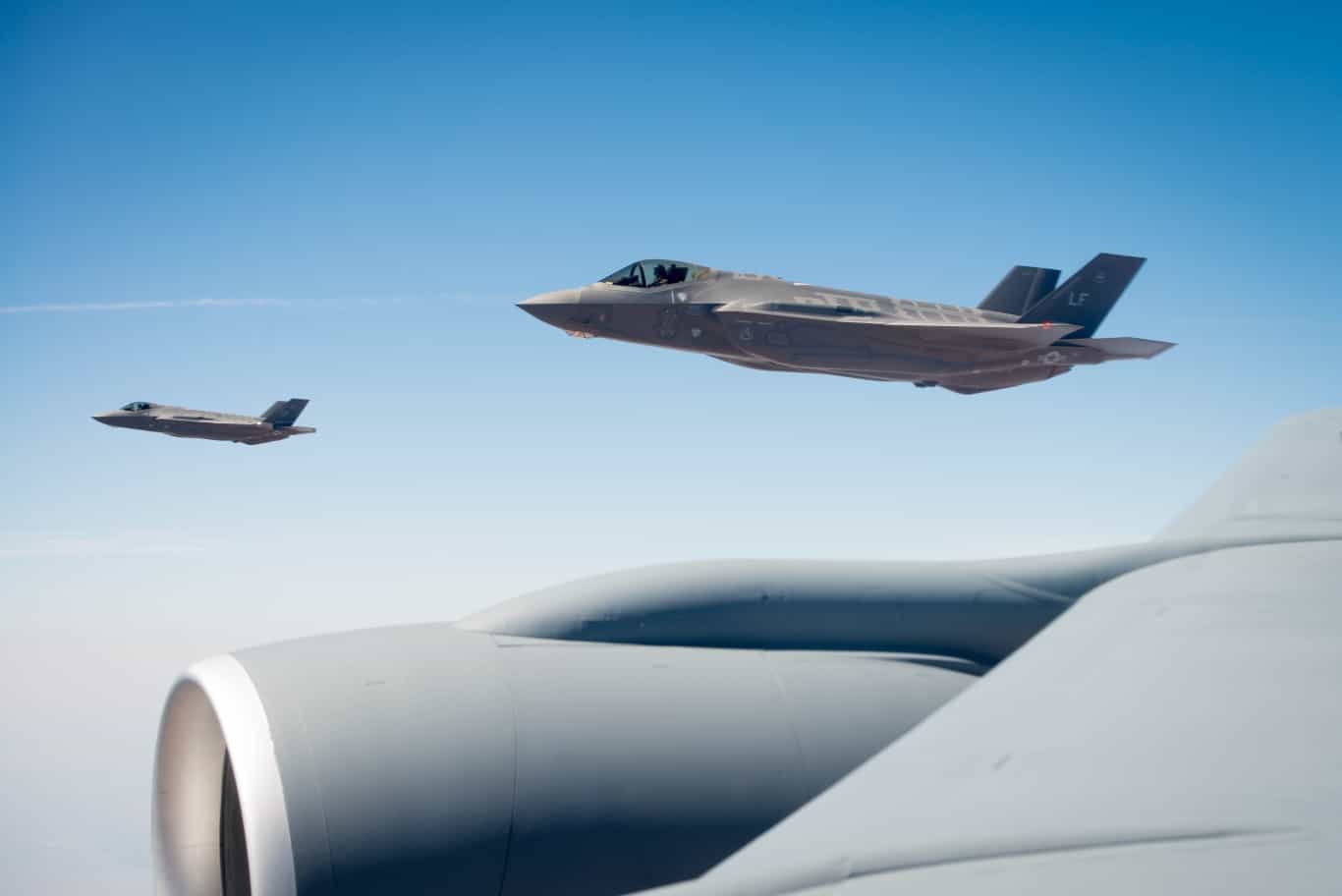
Published:

The Second World War saw the building of aircraft in the USA take off like never before. Before the war, the Americans only had a few hundred airplanes. This number grew tremendously, and by the end of the war, they had the largest air force that ever existed, with more than 80,000 aircraft.
During the war, vast advancements were made in the design and production of aircraft. Most of the aircraft produced at this time were constructed with a single-wing aluminum airframe. The aircraft typically had four engines and equipment for navigation, armament, communications, and crew accommodations. (Today, this American plane is the most widely-used fighter jet on Earth.)
To determine the least and most mass-produced American fighter planes from WWII, 24/7 Wall St. reviewed a catalog of World War II aircraft, a list compiled by Military Factory, an online database of military vehicles, aircraft, arms, and more. We only included fighter planes that were active during the war, ranking them based on the grand total produced. Prototypes and concept aircraft were excluded. Supplemental information about the year entered service, type, manufacturer, crew size, and top speed also came from the Military Factory.
The Lockheed P-38 Lightning was one of the most influential fighter-bomber aircraft in the Second World War. The Germans actually nicknamed this aircraft the “Fork-Tailed Devil” for its effectiveness in combat. It served in a variety of roles such as a bomber escort, tactical bomber, and top-cover fighter. The P-38 Lightning had a top speed of just over 400 mph and was outfitted with a series of high caliber machine guns and a 20mm automatic cannon in its nose, as well as high explosive aerial rockets and conventional drop bombs.
Some of these fighter planes doubled as bombers capable of conducting their bombing raids and engaging other enemy aircraft. Others also played roles as escorts for heavy bombers that were not capable of defending themselves in air-to-air combat.
The current generation of fighter jets, the F-35 Lightning II named after its predecessor, now plays a variety of roles aside from just engaging other enemy aircraft. However, one thing this generation of fighter aircraft does not do is transport troops, like some crossover fighter-bomber aircraft of World War II. While fighter planes have evolved over the years, they still have their roots in some of the most mass-produced fighter aircraft of the World War II era. (These are the oldest and newest fighter jets used in today’s Air Forces.)
Here is a look at the most and least produced American fighter planes of World War II:
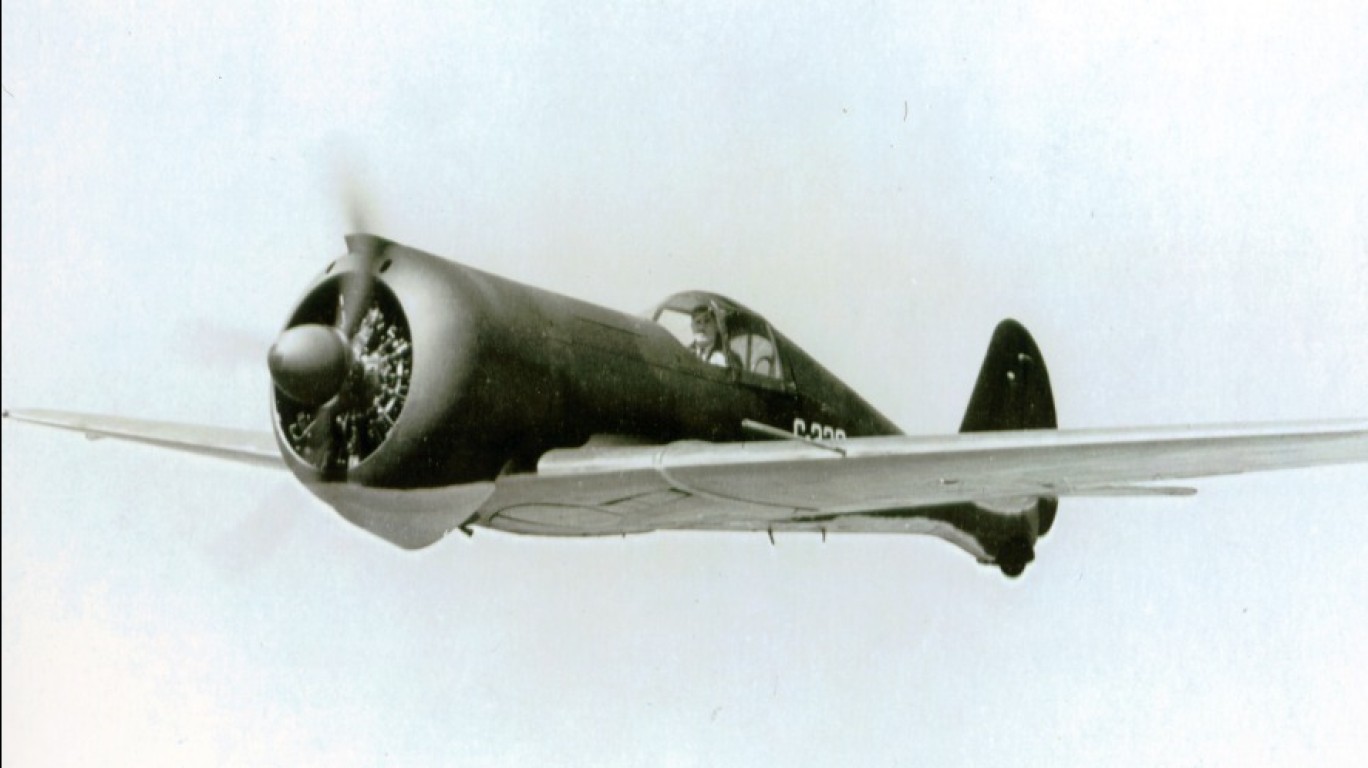
There were 62 of the Curtiss-Wright CW-21 Demon aircraft produced by Curtiss-Wright. This Fighter/interceptor aircraft entered service in 1939. It had a top speed of 314 mph and carried a crew of one.
There were 66 of the Bell P-59 Airacomet aircraft produced by Bell Aircraft. This Jet-powered fighter aircraft entered service in 1945. It had a top speed of 389 mph and carried a crew of one.

There were 66 of the Ryan FR Fireball aircraft produced by Ryan Aeronautical. This Mixed-power fighter aircraft entered service in 1945. It had a top speed of 426 mph and carried a crew of one.
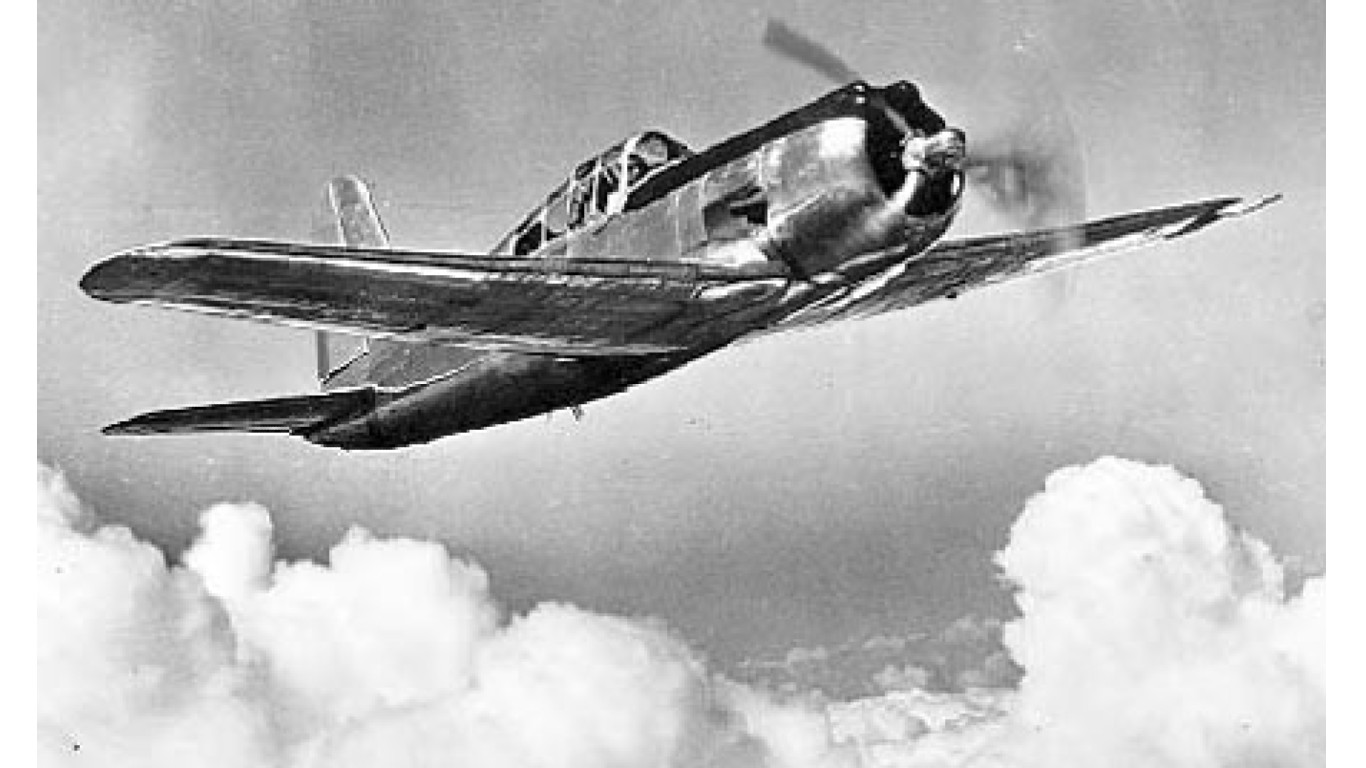
There were 146 of the Vultee P-66 Vanguard (Model 48) aircraft produced by Vultee Aircraft. This Fighter aircraft entered service in 1941. It had a top speed of 339 mph and carried a crew of one.
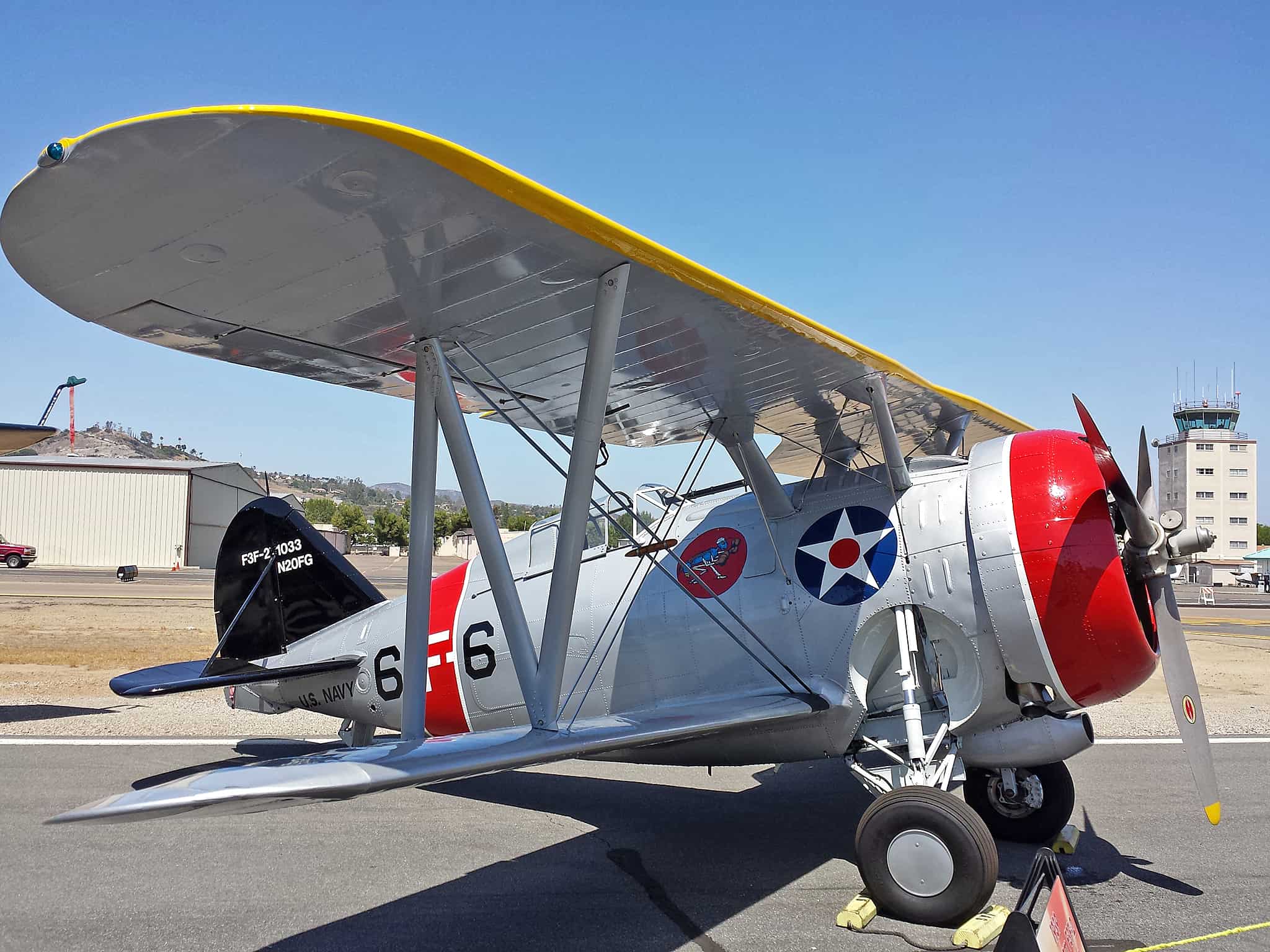
There were 147 of the Grumman F3F aircraft produced by Grumman. This Carrierborne biplane fighter aircraft entered service in 1936. It had a top speed of 264 mph and carried a crew of one.

There were 151 of the Boeing P-26 Peashooter aircraft produced by Boeing. This Fighter aircraft entered service in 1932. It had a top speed of 227 mph and carried a crew of one.
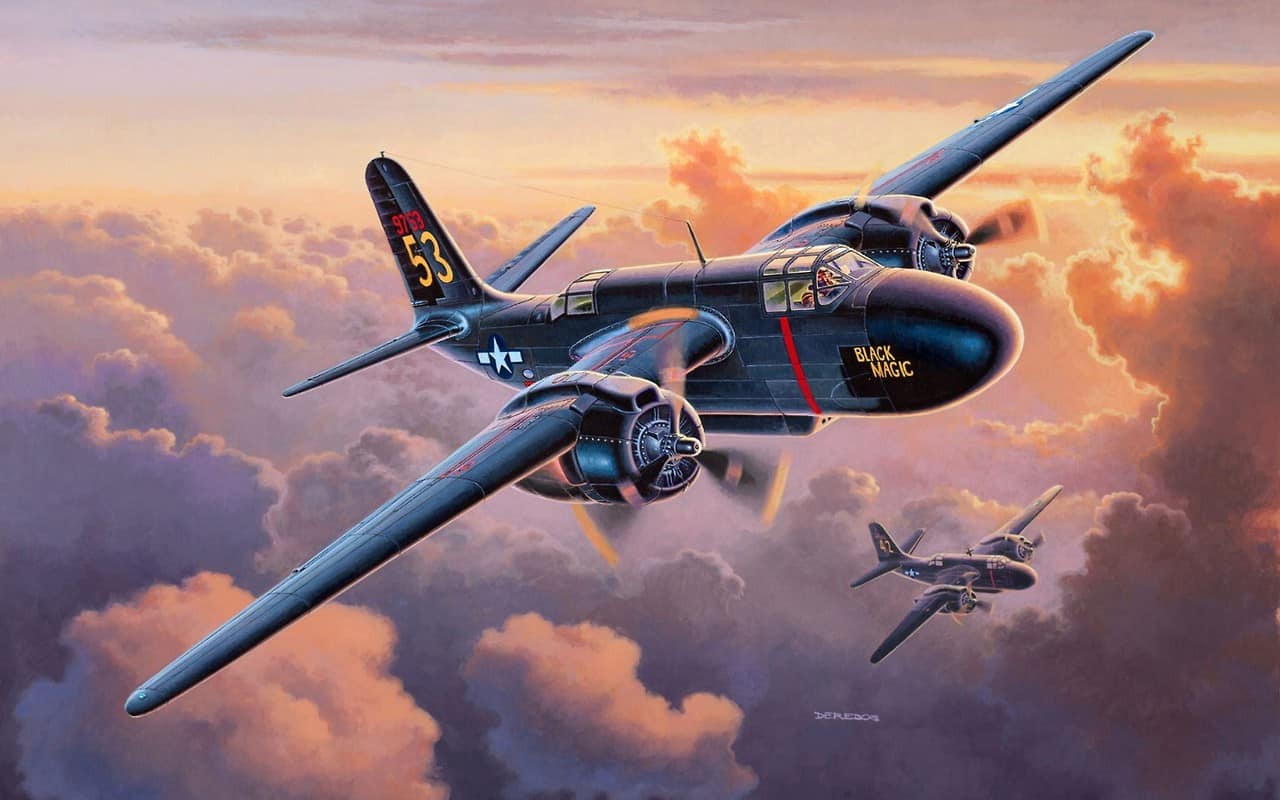
There were 163 of the Douglas P-70 Nighthawk aircraft produced by Douglas Aircraft. This Night fighter aircraft entered service in 1942. It had a top speed of 339 mph and carried a crew of three.
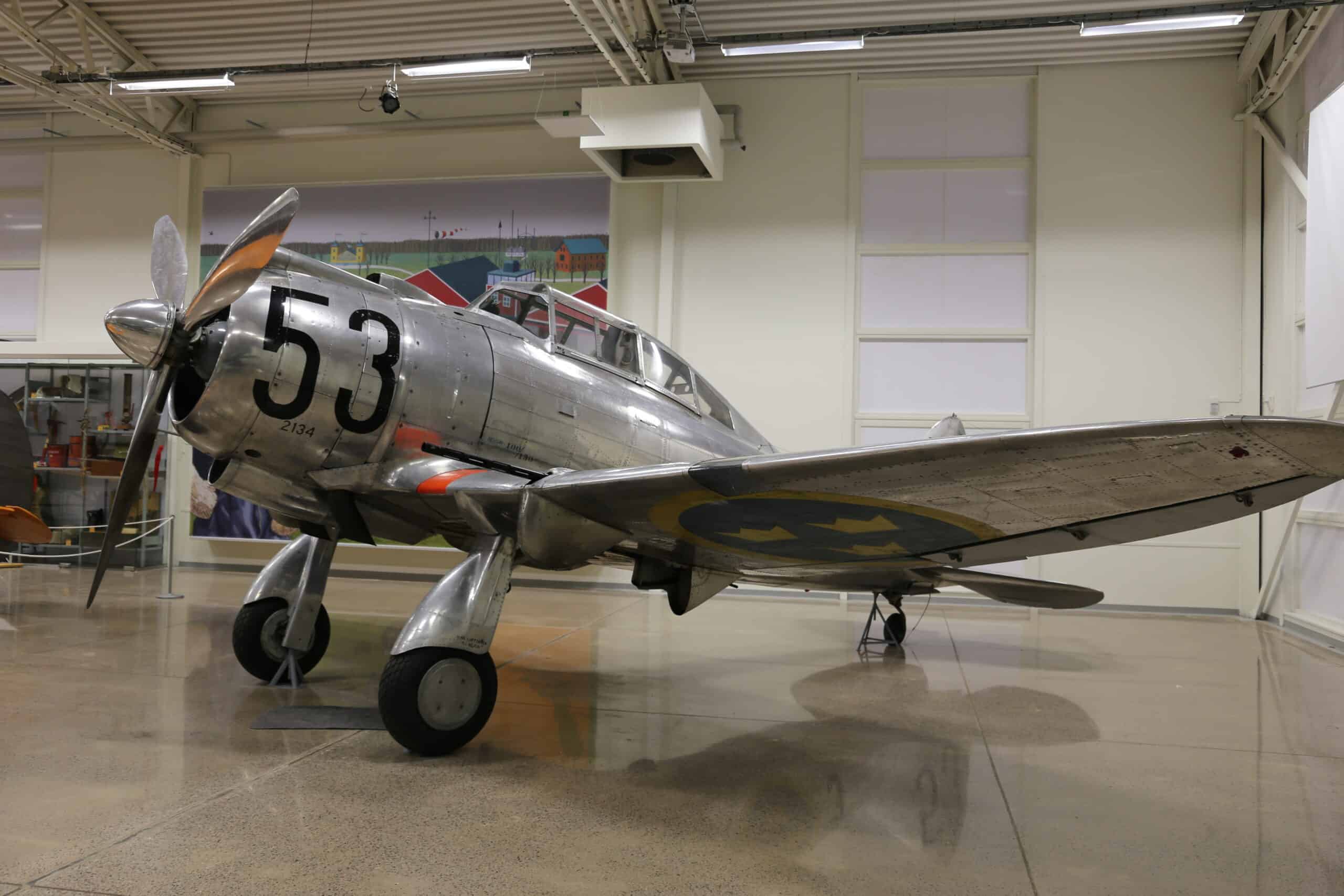
There were 196 of the Seversky P-35 aircraft produced by Seversky (Republic). This Fighter aircraft entered service in 1937. It had a top speed of 308 mph and carried a crew of one.

There were 257 of the Curtiss SBC Helldiver aircraft produced by Curtiss-Wright. This Naval dive bomber/fighter aircraft entered service in 1938. It had a top speed of 237 mph and carried a crew of two.

There were 272 of the Republic P-43 Lancer aircraft produced by Republic Aviation. This Fighter-bomber aircraft entered service in 1941. It had a top speed of 357 mph and carried a crew of one.

There were 509 of the Brewster F2A (Buffalo) aircraft produced by Brewster Aeronautical. This Fighter aircraft entered service in 1939. It had a top speed of 321 mph and carried a crew of one.

There were 600 of the Brewster F3A (F4U-1) Corsair aircraft produced by Brewster Aeronautical. This Carrierborne fighter aircraft entered service in 1943. It had a top speed of 416 mph and carried a crew of one.
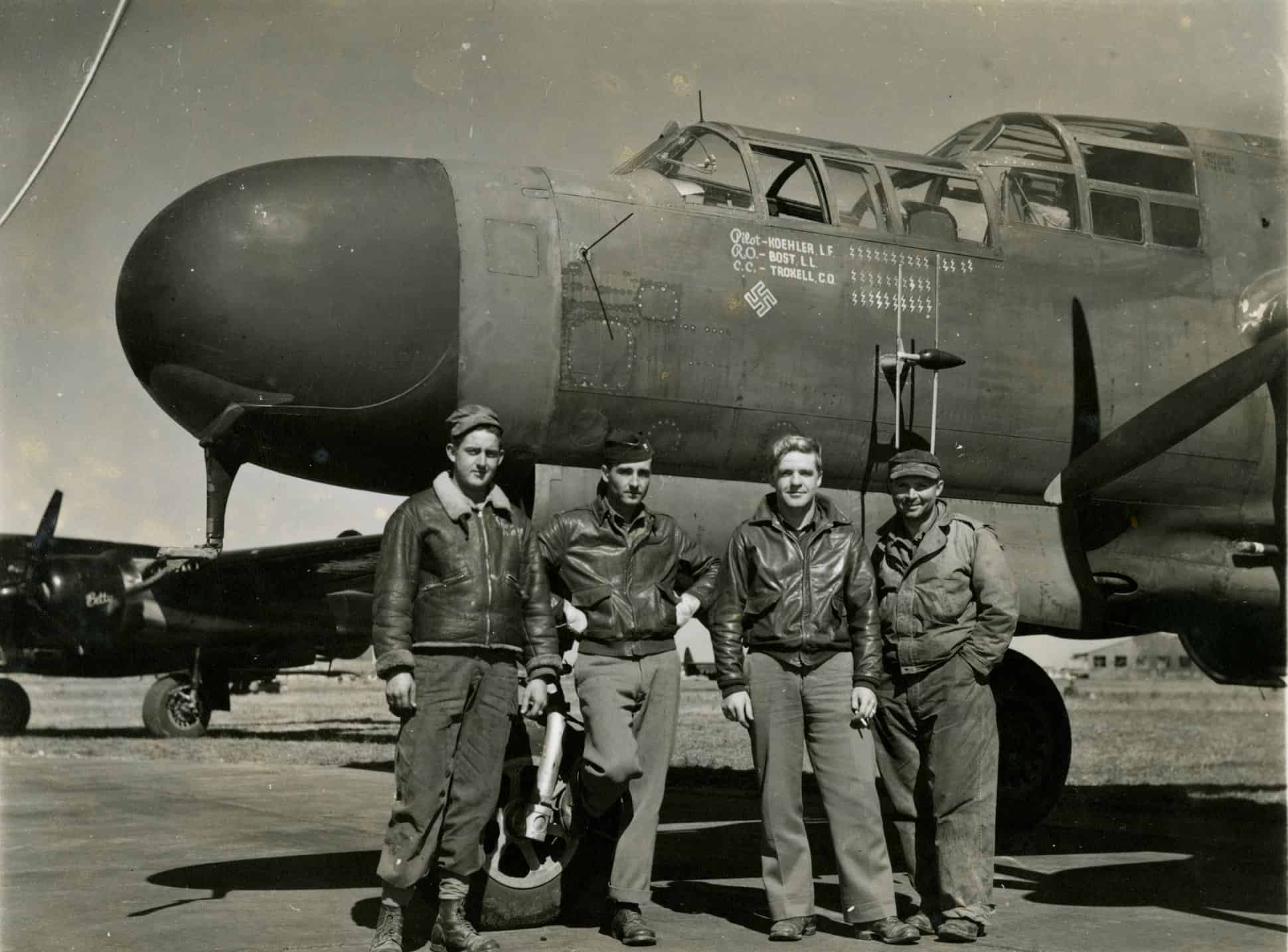
There were 742 of the Northrop P-61 / F-61 Black Widow aircraft produced by Northrop. This Night fighter reconnaissance aircraft entered service in 1943. It had a top speed of 366 mph and carried a crew of three.
There were 1,115 of the Curtiss P-36 Hawk (Hawk 75/Mohawk) aircraft produced by Curtiss Aeroplane Company. This Fighter aircraft entered service in 1938. It had a top speed of 322 mph and carried a crew of one.

There were 1,180 of the Curtiss P-40 Tomahawk aircraft produced by Curtiss-Wright. This Fighter aircraft entered service in 1941. It had a top speed of 351 mph and carried a crew of one.

There were 1,266 of the Grumman F8F Bearcat aircraft produced by Grumman. This Carrierborne interceptor aircraft entered service in 1945. It had a top speed of 421 mph and carried a crew of one.
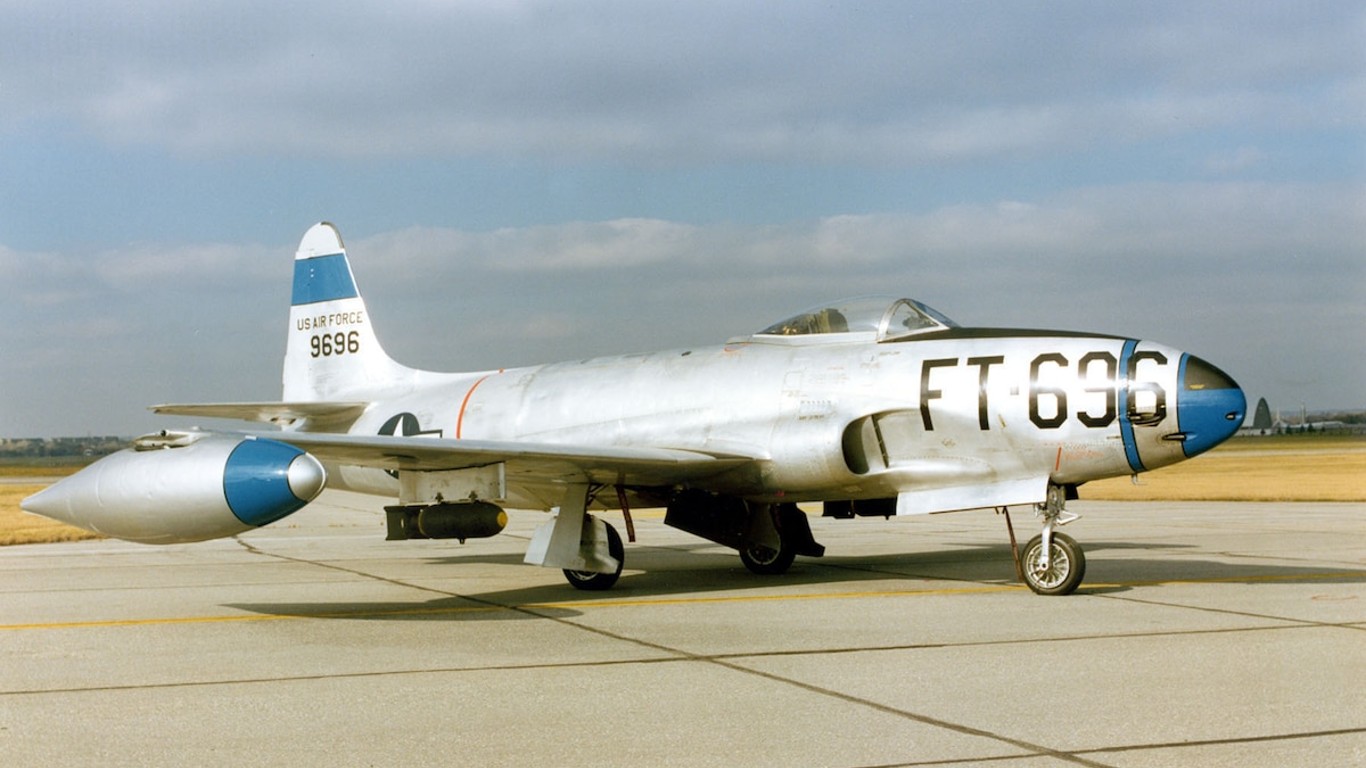
There were 1,715 of the Lockheed P-80 / F-80 Shooting Star aircraft produced by Lockheed. This Jet-powered fighter-bomber aircraft entered service in 1945. It had a top speed of 577 mph and carried a crew of one.
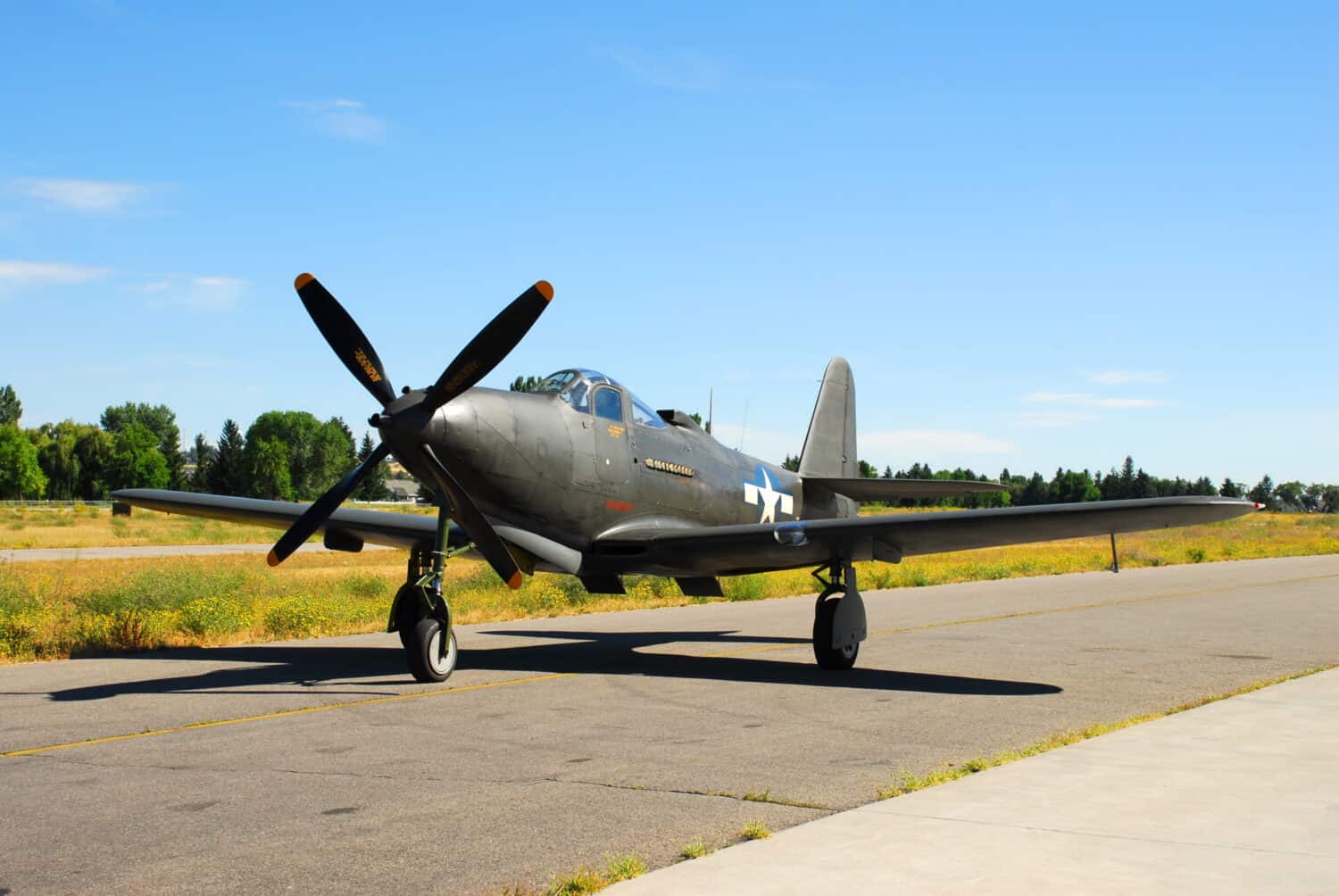
There were 3,303 of the Bell P-63 Kingcobra aircraft produced by Bell Aircraft. This Fighter aircraft entered service in 1943. It had a top speed of 410 mph and carried a crew of one.
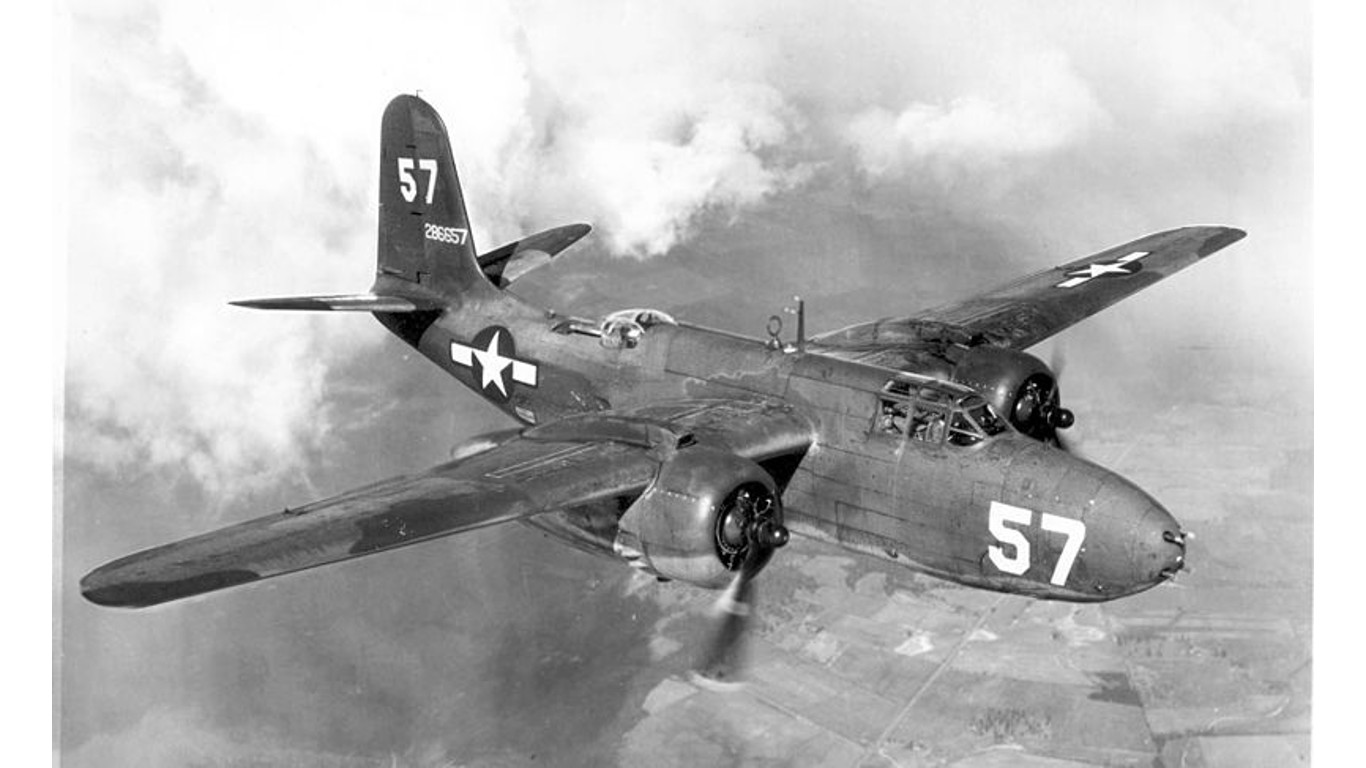
There were 7,478 of the Douglas A-20 Havoc / Boston aircraft produced by Douglas Aircraft. This Light bomber/night fighter aircraft entered service in 1941. It had a top speed of 339 mph and carried a crew of three.
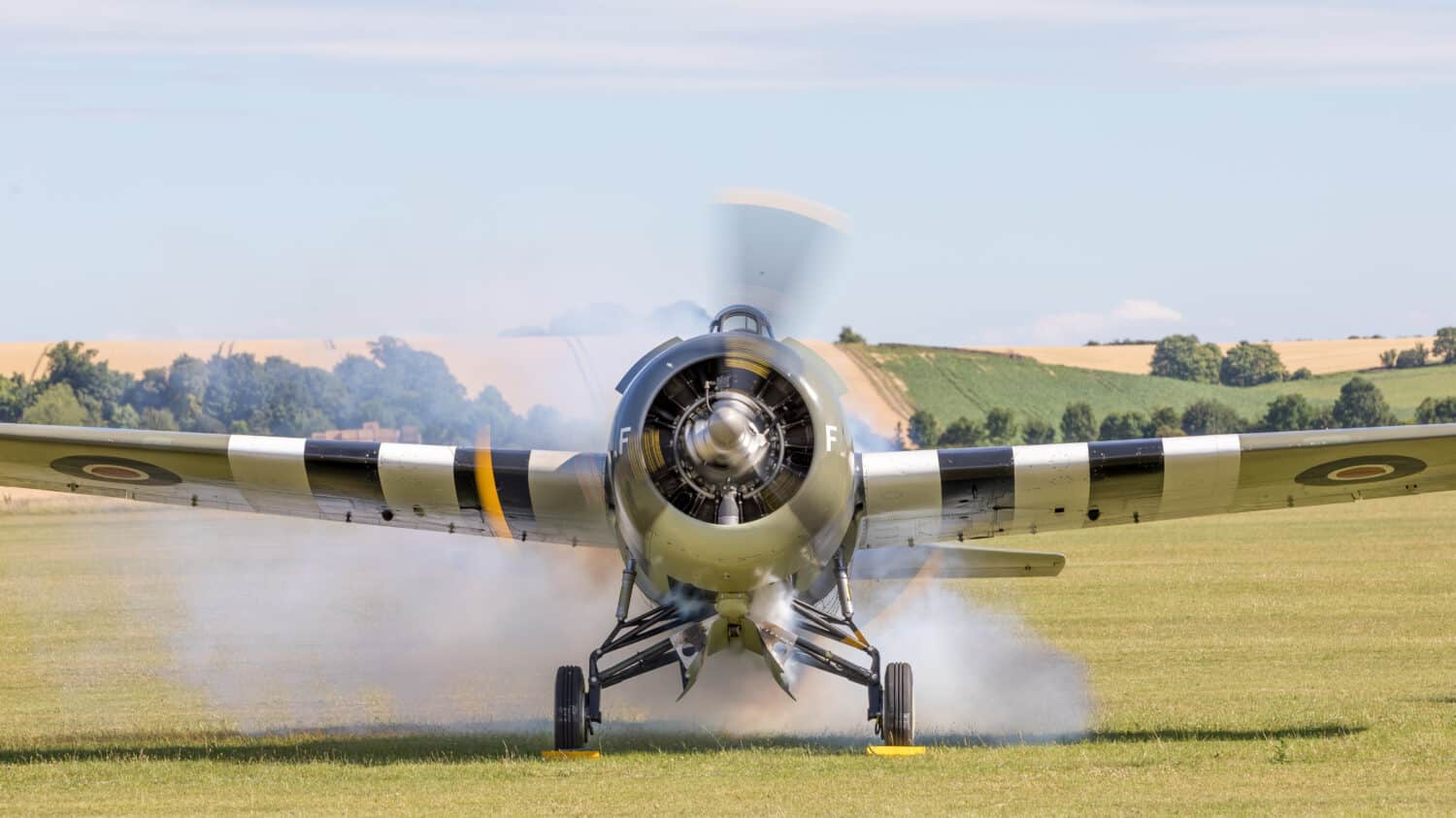
There were 7,722 of the Grumman F4F Wildcat aircraft produced by General Motors / Grumman. This Carrierborne fighter aircraft entered service in 1940. It had a top speed of 332 mph and carried a crew of one.

There were 9,588 of the Bell P-39 Airacobra aircraft produced by Bell Aircraft. This Fighter-bomber aircraft entered service in 1941. It had a top speed of 386 mph and carried a crew of one.
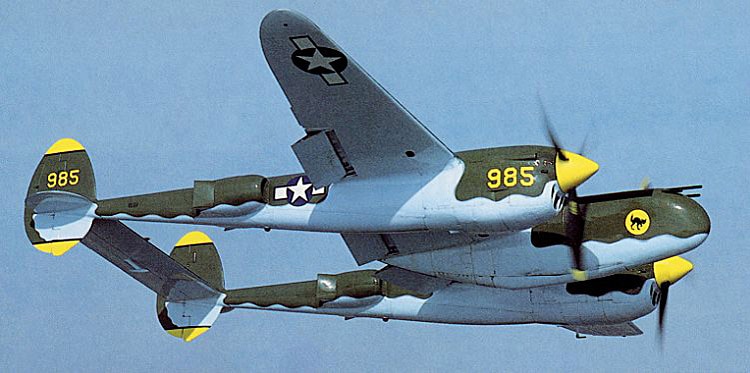
There were 9,923 of the Lockheed P-38 Lightning aircraft produced by Lockheed. This Fighter-bomber aircraft entered service in 1939. It had a top speed of 414 mph and carried a crew of one.
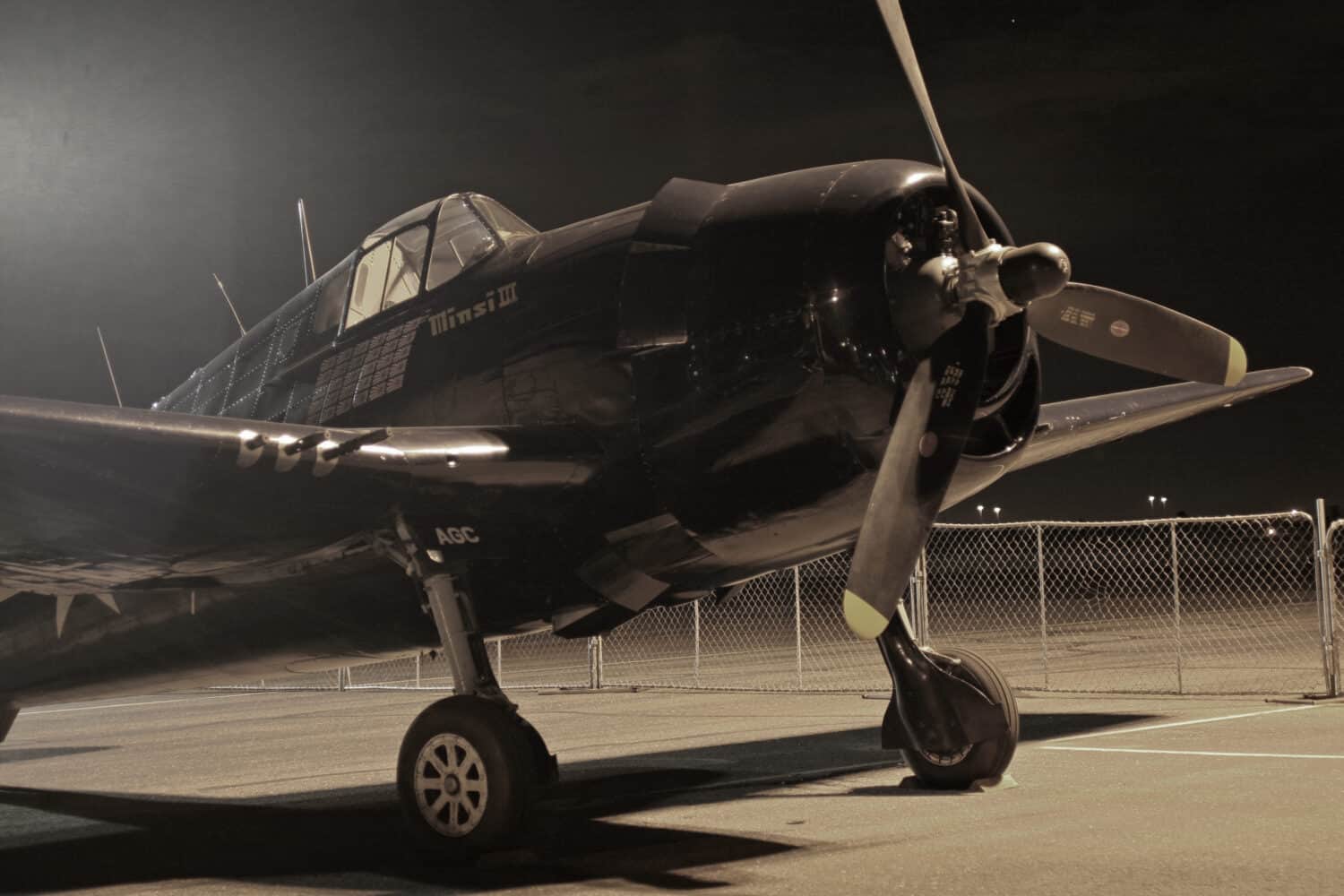
There were 12,272 of the Grumman F6F Hellcat aircraft produced by Grumman. This Carrierborne fighter-bomber aircraft entered service in 1943. It had a top speed of 380 mph and carried a crew of one.
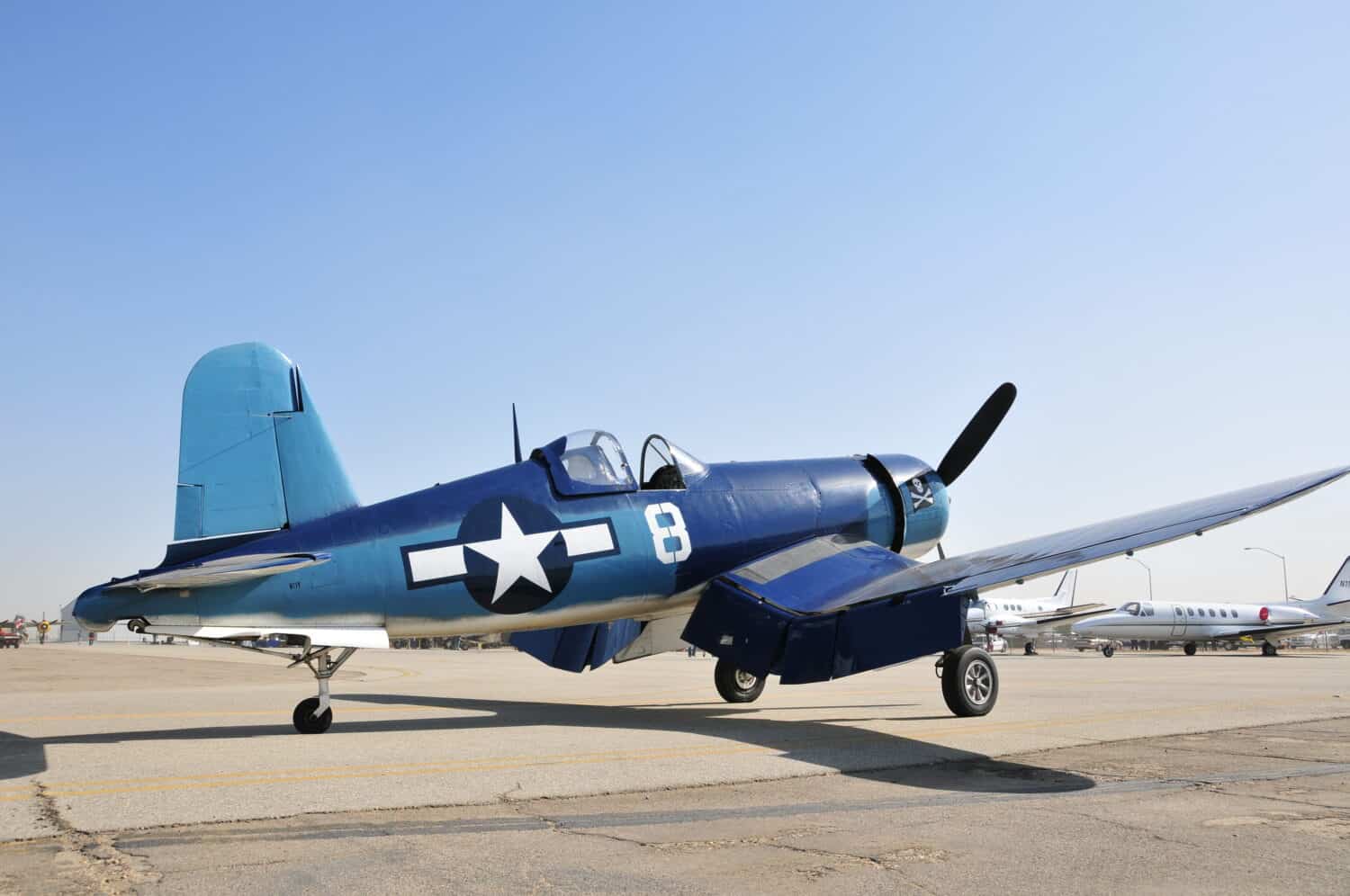
There were 12,571 of the Vought F4U Corsair aircraft produced by Chance Vought / Brewster Aeronautical. This Carrierborne night fighter-bomber aircraft entered service in 1942. It had a top speed of 446 mph and carried a crew of one.

There were 15,586 of the North American P-51 Mustang aircraft produced by North American Aviation. This Fighter-bomber aircraft entered service in 1942. It had a top speed of 437 mph and carried a crew of one.

There were 15,660 of the Republic P-47 Thunderbolt aircraft produced by Republic Aviation. This Fighter-bomber aircraft entered service in 1942. It had a top speed of 433 mph and carried a crew of one.

There were 16,800 of the Curtiss P-40 Warhawk aircraft produced by Curtiss-Wright. This Fighter-bomber aircraft entered service in 1941. It had a top speed of 378 mph and carried a crew of one.
Retirement planning doesn’t have to feel overwhelming. The key is finding expert guidance—and SmartAsset’s simple quiz makes it easier than ever for you to connect with a vetted financial advisor.
Here’s how it works:
Why wait? Start building the retirement you’ve always dreamed of. Click here to get started today!
Thank you for reading! Have some feedback for us?
Contact the 24/7 Wall St. editorial team.